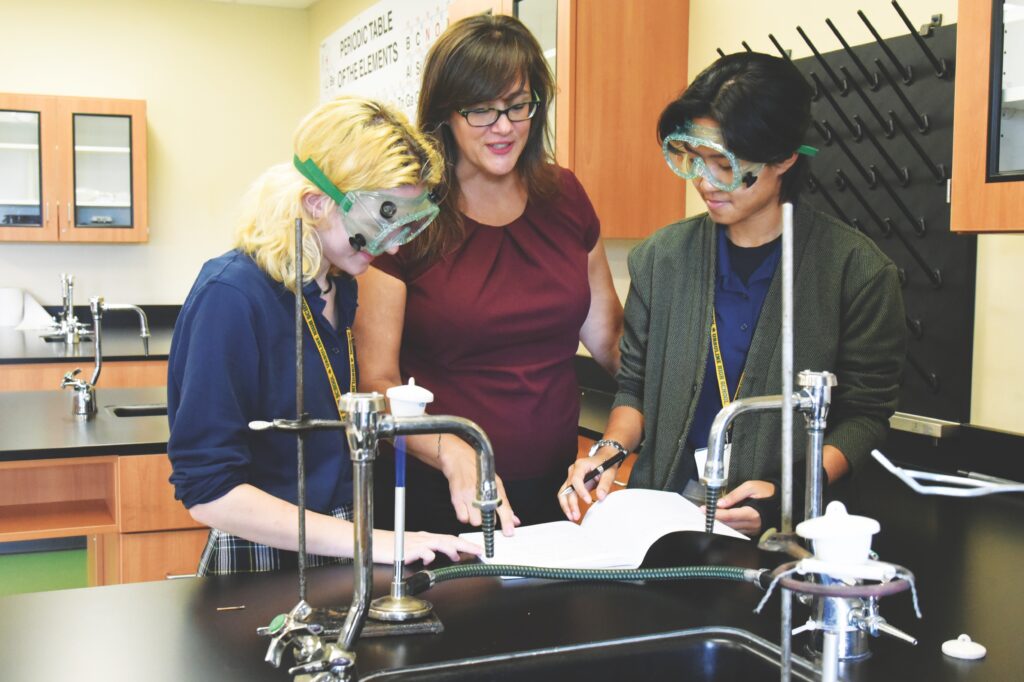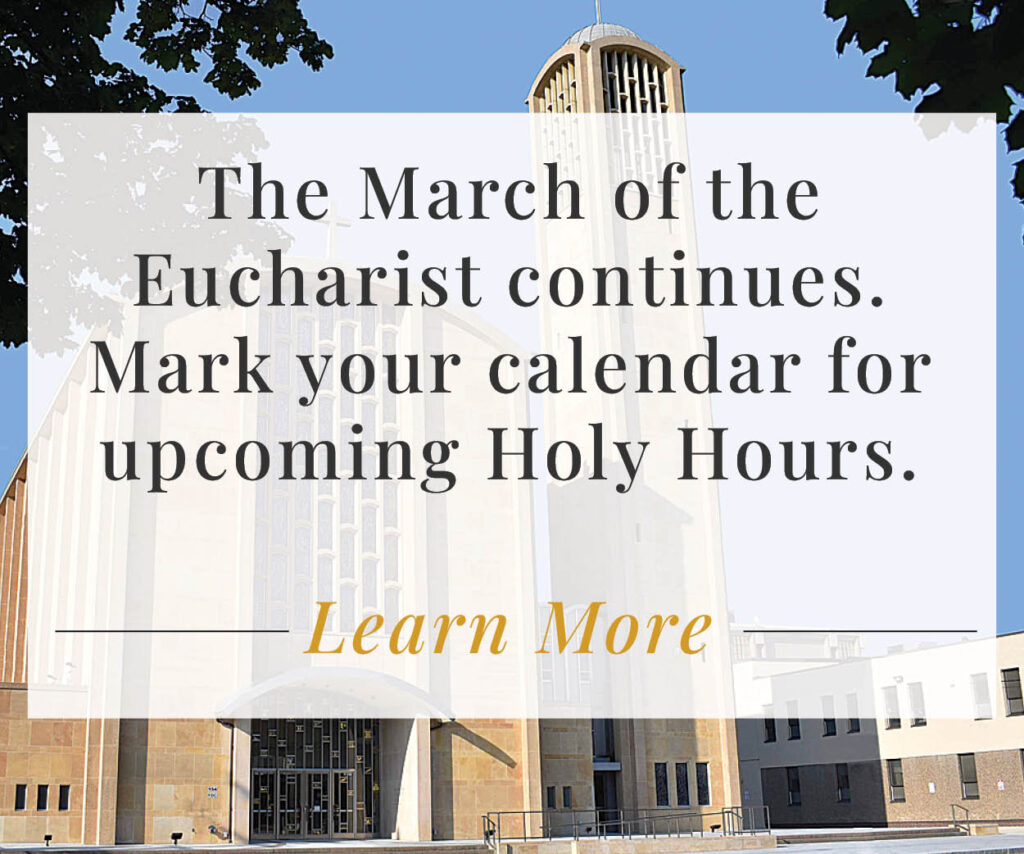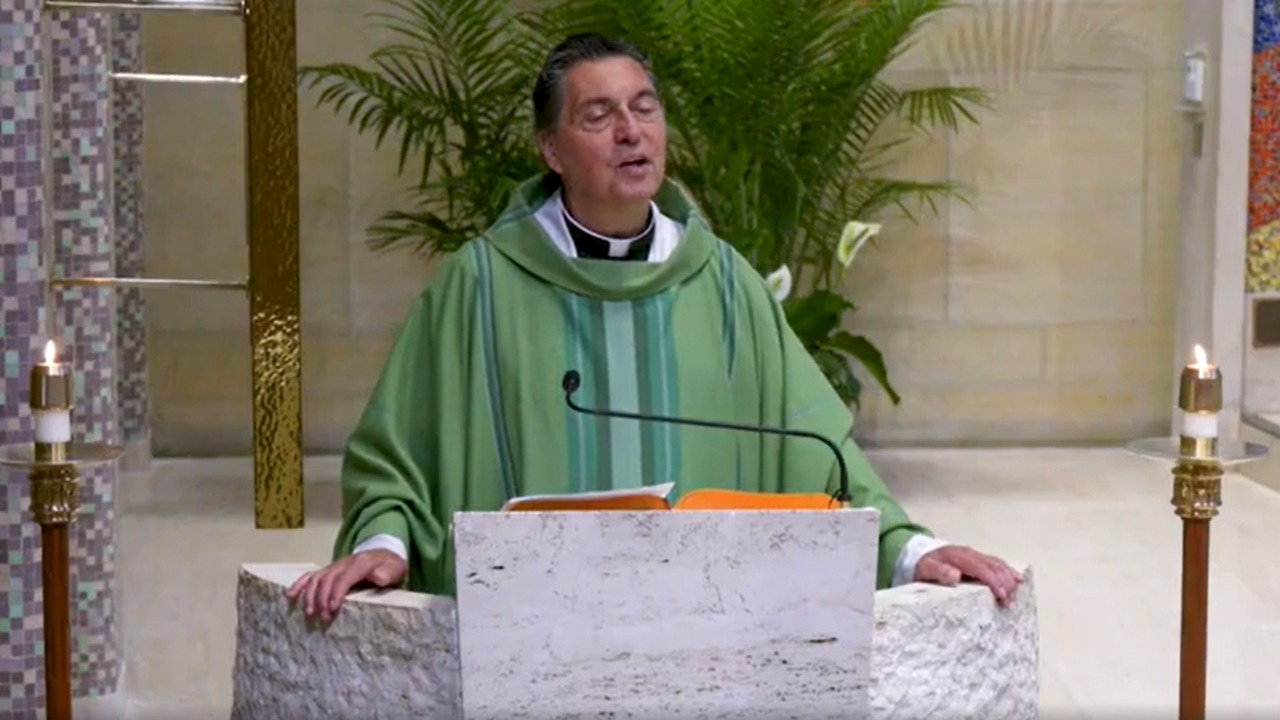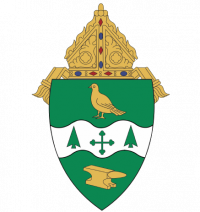
Catholic school families and Catholic school administrators are voicing excitement and hope with the implementation of the new expanded Ohio EdChoice program.
“We are very hopeful,” said Mary Fiala, diocesan superintendent of schools, who noted that the original EdChoice program, enacted by the state for the 2006-2007 school year, enabled families—regardless of income—whose children live in “state designated underperforming school districts to receive a scholarship for most or all of their tuition at a non-public school of their choice.”
Some schools, depending on which districts they were drawing from, had a higher or lower percentage of their students receiving EdChoice scholarships, Fiala explained. About a decade ago, the program was expanded to offer an EdChoice scholarship based on a family’s income regardless of the school district that the student was coming from. To be eligible, families had to have an income 200 percent below the poverty level.
“This earlier expansion was phased in incrementally—beginning with kindergarten and adding another grade each year,” Fiala said. Both the original EdChoice and the income-based version helped many families, but not all.

The addition of an income-based component “made a world of difference for us,” said Holly Henry, who, with her husband, Ray, has a daughter, Elizabeth, a seventh-grader at St. Nicholas School in Struthers, and a son, Leo, a freshman at Cardinal Mooney High School in Youngstown.
They wanted a Catholic education for both their children, but the Henrys were not able to benefit from the original EdChoice program. “When Leo started, our home school was not eligible,” she said. They managed to enroll their children in St. Nicholas School, but it was a struggle. The creation of the income-based scholarship made the difference, Henry said.
“With the way that prices on everything have skyrocketed, we probably would have had to reconsider keeping them in Catholic schools,” she noted. “It’s still been a bit of a sacrifice.”

“The wonderful education that they have received at St. Nick’s and now at Mooney has really been amazing for us,” Henry said. “The Christian service program, attending Mass, learning about their faith, were exactly what we were looking for in a school.”
Still, not every family could benefit.
Now, with the passage of Ohio House Bill 33, which was signed into law July 4, all K-12 students in Ohio are eligible for an EdChoice scholarship—including students already enrolled as well as students entering the Catholic school system this school year.
With the new expanded EdChoice, Fiala explained, “Your family qualifies for the full scholarship if your family income is within 450 percent of the poverty level” based on total income and family size. “A family of four could make $134,000 and still apply for full scholarship.”
Families with a higher income would still qualify to receive scholarships “in increments. Everyone who successfully applies will get at least a partial scholarship.”
For the 2023-2024 school year, grade school scholarships would be as high as $6,165 to as low as $650 per year. High school scholarships would run from $8,407 to $950.
“The big thing that we are excited about is that we are supportive of the parents’ right to choose. We are not opposed to public schools,” Fiala emphasized.
“We are really hoping that our Catholic families who felt that they could not afford a Catholic education before will think about taking advantage of this opportunity,” Fiala said. “Of course, we have always welcomed families who aren’t Catholic who share our values and want that kind of education for their children.”

As to how many families will receive EdChoice scholarships under the new expansion, “that is a really tricky question,” Fiala said. Because the law was enacted only in July, many families had made their decisions for the 2023-2024 school year and some applications are still being processed.
“Last year, we had probably about 40 percent of our students receiving EdChoice scholarships,” she noted. “I’m guessing that about 90 percent of families, in time, will receive scholarships.”
Sheena Williams of Canton, a licensed cosmetologist whose daughter, Amara, is a freshman at St. Thomas Aquinas High School in Louisville, said she wanted to send her daughter to Aquinas after the positive experience Amara had attending Our Lady of Peace School in Canton.
“I love the strong academics. They are very family-oriented, and they have a calm and secure atmosphere,” she said. “Without EdChoice, there is no way we would have been able to pay for it out of pocket”—particularly with her plans to go back to school to become a licensed practical nurse (LPN).
For parents like Ryan and Rebekah Cole, who is an art teacher at Saint John School in Ashtabula, expanded EdChoice offers real relief.

Their son, Owen, a fourth-grader, has been at Saint John, which is a K-12 school, since kindergarten. “We were never eligible for EdChoice until now. I don’t like to call it a burden because of how much we love the school and how much he loves it. It has been worth every penny,” Ryan Cole said.
Still, EdChoice promises to ease the financial pressure on him and other families who might be struggling,” he said. “It will allow families who are on the bubble another option.”
Another parent, Melissa, a mother of four who has two children in St. Nicholas School in Struthers and one in Struthers High School, said that in the past, “We’ve applied for EdChoice several times but were denied.” Both she and her husband attended Catholic schools and wanted to provide that for their children but “it was a struggle to pay the tuition, and we both work full time.”
Now they are finding relief. “We may even be able to think about Catholic high school for the rest of our kids,” Melissa said.
Father Donald King, president of Stark County Catholic High Schools, which includes St. Thomas Aquinas High School and Middle School in Louisville and Canton Central Catholic High School, called the expansion “a good thing for the kids, a good thing for the families and a good thing for the schools.”
Father King noted that there are differences between various schools in the percentage of EdChoice funding, but that the value of the program is significant for all schools. When it comes to the potential impact of changes in EdChoice, “We will have a better idea once the process gets going.”
In general, he added that “this is bound to have a good effect.”
Alyse Consiglio, principal of the upper campus at John F. Kennedy (JFK) School in Warren, noted that both of JFK’s campuses “are benefiting tremendously and so are many families.”
This year, the increase was limited because of the timing of the passage of the expanded EdChoice—when a lot of families were already committed—but Consiglio sees benefits both for now and for the future.

“We have never had so many requests earlier in the year for shadowing or transfers.”
Father Richard Murphy, president of Ursuline High School in Youngstown, said he is excited for what expanded EdChoice can mean.
He noted that at present “at Ursuline we have about 520 students, and 460 receive EdChoice scholarships. That’s amazing.” With the expansion, ”our hopes would be that a larger percentage of families would be able to benefit—a real opportunity to attend Ursuline.”
Consiglio, Father King and Father Murphy all noted that additional benefits include each school being able to reconfigure their scholarship money more effectively—possibly being able to direct scholarship money toward educational programs and staff. The influx of a greater number of students could also help bring in more income to enhance the schools.
Father Murphy, however, offered one caution. “Right now, the political will of Ohio is an expanded tuition scholarship program and that is great news, but no one knows if this program will be viable longterm”—if public opinion might shift in the future.
So, Father Murphy commented, Catholic schools need to avail themselves of the opportunities that expanded EdChoice offers but also prepare for the possibilities the program will not always enjoy public support.
Yet, right now, all agree on the current benefits. “Any financial help that can aid parents in choosing their children’s school is a great thing,” said Consiglio.












